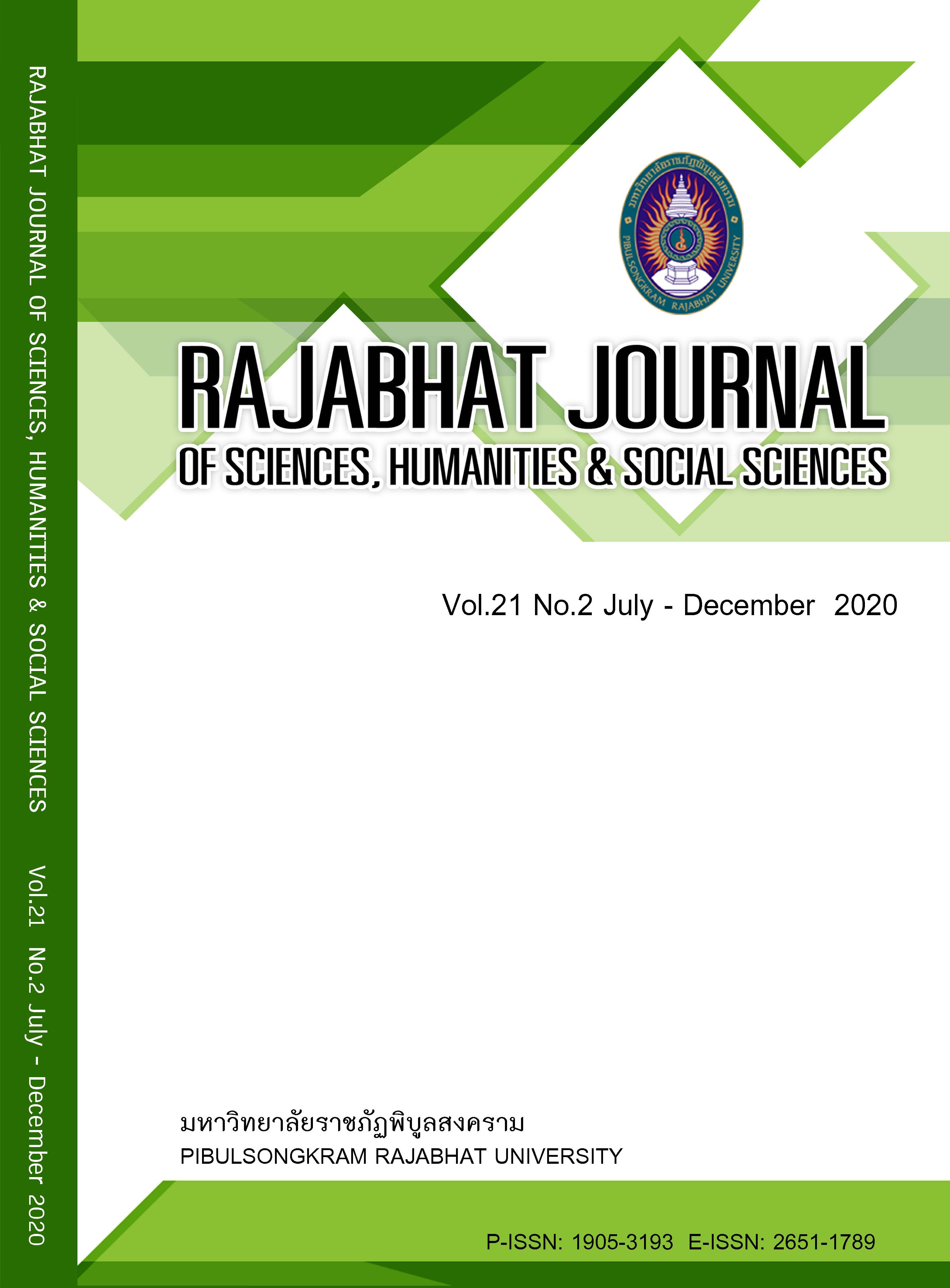CHANGES OF SOIL PROPERTIES AFTER THE USE OF WEED CONTROL BIO-EXTRACTS
Keywords:
Soil properties, Bio-extracts, WeedAbstract
This research aimed to study the effects of weed control bio-extracts on microbial biomass and soil properties in cos lettuce salad plantation. The experiments were conducted using 4 x 5 factorial design in RCBD with triplicate. There were two studying factors, types of bio-extracts and dosage use (dilution ratio of bio-extracts with water before spraying). Four types of bio-extracts were studied including; 1) bio-extract from fruit wastes, 2) from vegetable wastes 3) from fish wastes and 4) Land Development Department formular. Dosage levels were varied (bio-extract:water) from 1:1, 1:2, 1:3, 1:4 to 1:5. Each dilution (5 liters) was sprayed every 7 days for 6 weeks. It was found that bio-extracts induced changes in soil properties as evidenced by the increase of macro and micro nutrients after use. Bio-extract from fruit wastes provided the best resulting in the improved soil nutrients and consequently increased cos lettuce fresh weight. However, there were no significant differences in the microbial biomass.
References
Abouxiena,, H. F.; ISMAIL, A. E.; RADWAN, S. M. Effect of bio-organic fertilizers, hoeing and polyethylene mulch on weeds, the citrus nematode (Tylenchulus semipenetrans) and yield of mandarin trees in Egypt. Acta Adv. Agric. Sci., v. 2, n. 5, p. 10-26, 2014.
Bingaman, B. R.; Christians, N. E.1995. Greenhouse screening of corn gluten meal as a natural control product for broadleaf and grass weeds. HortScience, v. 30, n. 6, p. 1256-1259, 1995.
Chuleikorn Thanathitikon. Dangers of agricultural chemicals. 2019. Occupational Disease and Environment Division, Department of Disease Control. http://envocc.ddc.moph.go.th/. Accessed December 4, 2019.
Grossman, K, Hutzler J, Tresch S, Christiansen N, Looser R, Ehrhardt T. 2012. On the mode of action of the herbicides cinmethylin and 5-benzyloxymethyl-1,2- isoxazolines: putative inhibitors of plant tyrosine aminotransferase. Pest Manag. Sci., v. 68, n. 3, p. 482-491, 2012.
Komchadluek. 2019. Agro-chemicals just the beginning Keep on substitutes - help farmers Available at: https://www.komchadluek.net/news/edu-health/394928, Accessed October 23, 2019.
Tnnthailand.2019. Alternatives for Thai farmers, after 3 flat chemicals.Available at: https://www.tnnthailand.com/content/21999, Accessed November 19, 2019
Nice, G.; Johnson B.2009. A comparison of "natural products" for organic production. West: Lafayette: Purdue Extension Weed Science, 2009. 6 p.
Tran Dang Xuana, Tsuzuki Eijia,, Terao Hiroyukia, Matsuo Mitsuhiroa,Tran Dang Khanha, Ill-Min Chun.2004. Evaluation on phytotoxicity of neem (Azadirachta indica. A. Juss) to crops and weeds. Crop Protec., v. 23, n. 4, p. 335-345, 2004.
Nisit Kamla. 2550. The role of biological fermentation in soil microorganisms and plant growth. Dissertation, Doctor of Philosophy Program in Agronomy, Graduate School. Khon Kaen University.
Downloads
Published
How to Cite
Issue
Section
License
Each article is copyrighted © by its author(s) and is published under license from the author(s).










